1. Greta Garbo: The Original ‘Swedish Sphinx’
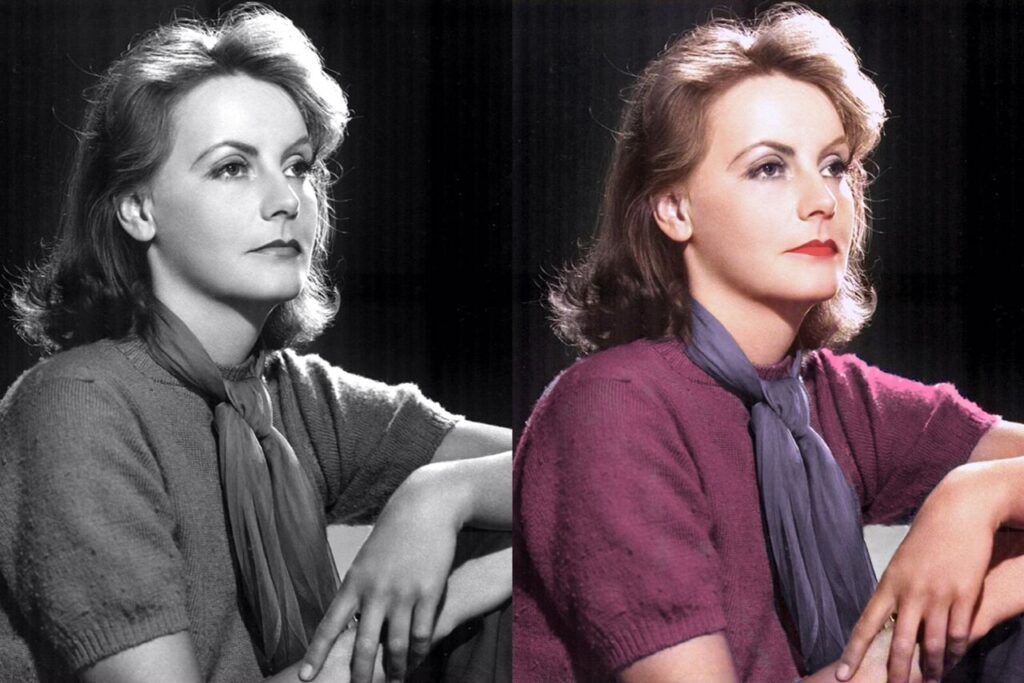
Known as the “Swedish Sphinx,” Greta Garbo captivated 1930s audiences with her striking beauty, deep expressiveness, and an almost mythical aura of mystery. Garbo was one of the first global movie superstars to master the art of aloof glamour, which only deepened her legend. Unlike many Hollywood contemporaries, she prioritized a fiercely private life, famously stating, “I want to be alone,” a line from the film Grand Hotel that became her lifelong mantra. Her groundbreaking roles in films like Queen Christina (1933) and Camille (1936) allowed her to command the screen with a subtle intensity that few actors could match. Garbo shocked the world when she retired abruptly at the height of her fame in 1941 at age 36, choosing a quiet life away from the spotlight. This decision to prioritize solitude over the demands of celebrity cemented her status as an enduring symbol of elusive, sophisticated star power, and her influence on fashion and the female on-screen image is still palpable today.
2. Marilyn Monroe: The Ultimate Hollywood Bombshell
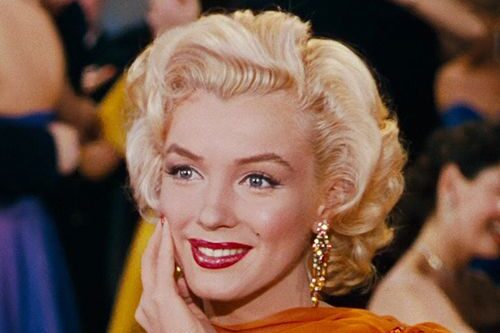
No list of enduring icons is complete without Marilyn Monroe, whose combination of playful innocence, radiant sensuality, and underlying vulnerability made her one of the most unforgettable figures of the 20th century. Born Norma Jeane Mortenson, she rose to global fame in the 1950s, embodying the quintessential Hollywood dream factory product. Monroe’s most iconic performances in films like “Gentlemen Prefer Blondes” (1953), where she famously sang “Diamonds Are a Girl’s Best Friend,” and “Some Like It Hot” (1959), which earned her a Golden Globe, cemented her cinematic legacy. Her powerful image was carefully crafted but also contained a genuine spark that resonated deeply with the public. Off-screen, her high-profile marriage to baseball legend Joe DiMaggio and later to playwright Arthur Miller made her a constant fixture in the cultural conversation. Decades after her tragic passing, Monroe remains the ultimate symbol of timeless, complicated star power, with her distinct look and persona continuing to inspire artists, fashion designers, and actors globally.
3. Marlene Dietrich: The Defiant Elegance
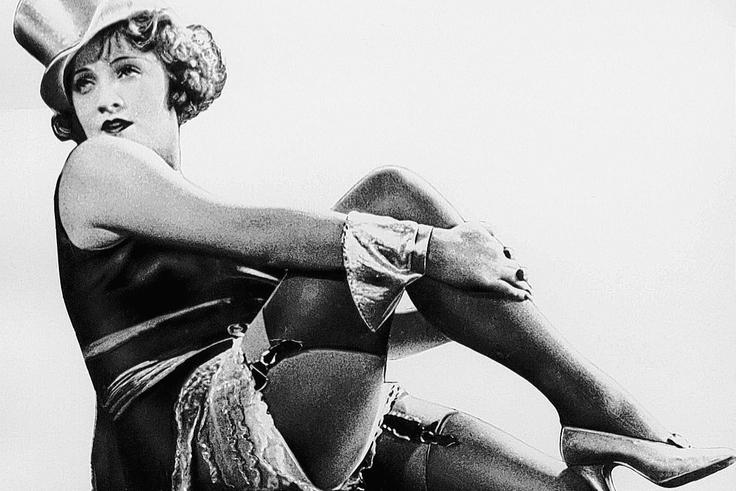
Marlene Dietrich stands as a towering figure of sophisticated defiance, using her sultry voice, luminous on-screen presence, and daring androgynous style to revolutionize the image of female glamour. Born in Germany, Dietrich achieved international stardom with her iconic role in “The Blue Angel” (1930), a performance that established her as a sophisticated, world-weary siren. When she came to Hollywood, she famously collaborated with director Josef von Sternberg to craft her meticulously elegant image. Dietrich made waves in the 1930s by openly challenging gender norms, wearing tuxedos and men’s tailored suits both on- and off-screen. This bold fashion choice blurred gender lines and helped create a new standard of stylish freedom, making her an idol for women seeking independence. During World War II, she put her career on hold to become a tireless entertainer for Allied troops, a display of patriotism that earned her the U.S. Medal of Freedom. Her unwavering confidence and mix of elegance and defiance continue to inspire contemporary artists.
4. Joe DiMaggio: The Yankee Clipper Legend
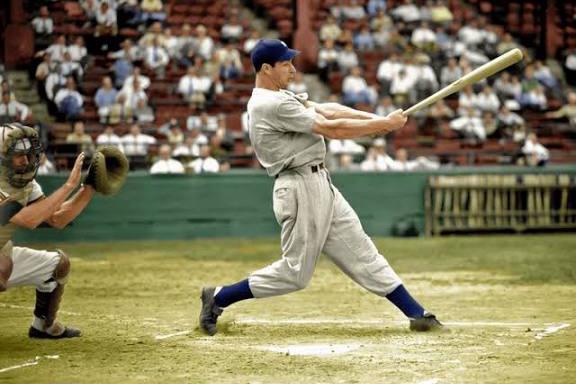
Joe DiMaggio, nicknamed “The Yankee Clipper,” transcended the world of sports to become an American cultural hero whose legend was sealed as much by his baseball prowess as by his iconic marriage to Marilyn Monroe. Playing his entire 13-year career for the New York Yankees, DiMaggio was a three-time MVP and a 13-time All-Star, leading the Yankees to nine World Series championships. His most legendary feat, however, remains his 56-game hitting streak in 1941, a record that many consider unbreakable and which captivated the nation during a period of international tension. While his on-field performance earned him a place in the Baseball Hall of Fame, his brief, tumultuous marriage to the ultimate Hollywood icon, Marilyn Monroe, in 1954, turned their relationship into a piece of American folklore. This powerful intersection of sports royalty and Hollywood glamour cemented DiMaggio’s place in the broader cultural imagination, immortalizing him as a figure of dignified, quiet heroism and classic American iconography.
5. Marlon Brando: The Rebel Titan of Cinema
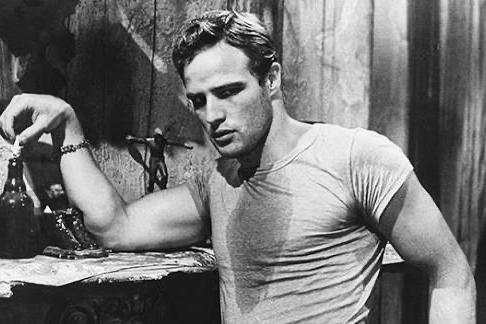
With his raw, intense energy and deeply felt performances, Marlon Brando redefined American acting in the post-WWII era, becoming the ultimate symbol of rebellious cool. A disciple of the “Method acting” technique, Brando brought an unprecedented level of naturalism and emotional depth to the screen. His groundbreaking roles in “A Streetcar Named Desire” (1951) and “On the Waterfront” (1954), for which he won his first Oscar, established him as a cinematic titan and a figure of profound anti-establishment charisma. Brando’s style was defined by his brooding intensity, a leather jacket, and the famous T-shirt, which instantly became the uniform for the youth rebellion of the 1950s. Decades later, he demonstrated his enduring power by taking on the role of Vito Corleone in “The Godfather” (1972), a masterful performance that earned him his second Academy Award. Brando’s commitment to challenging conventional Hollywood norms and his volcanic on-screen presence ensures his place as one of the most influential and enigmatic actors in film history.
6. James Dean: The Eternal Face of Rebellion
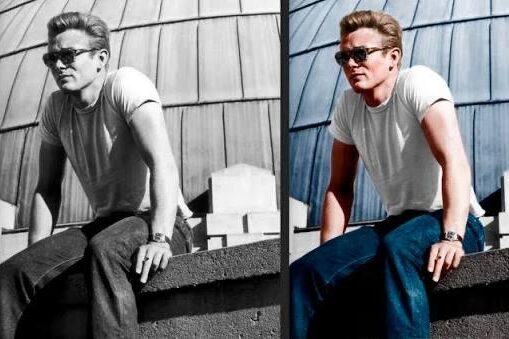
James Dean remains an eternal symbol of youth rebellion and unfulfilled promise, an icon whose image was fixed forever by his tragic death in a car crash at the age of just 24. Though his career spanned only three major film roles, his impact on pop culture is immeasurable. His star-making turn as the misunderstood teen Jim Stark in “Rebel Without a Cause” (1955) perfectly captured the alienation, angst, and yearning for authenticity felt by the post-war generation. This role established him as the face of teenage defiance and an enduring counter-cultural figure. His other memorable performances in “East of Eden” (1955) and “Giant” (1956) showcased a complex, brooding vulnerability that resonated deeply with young audiences. Because his life was cut short at the peak of his fame, Dean’s charismatic, rebellious spirit was forever preserved in a moment of youthful intensity, turning him into a cinematic legend whose spirit continues to influence fashion, music, and the very concept of “cool.”
7. Grace Kelly: From Screen Queen to Real-Life Royalty
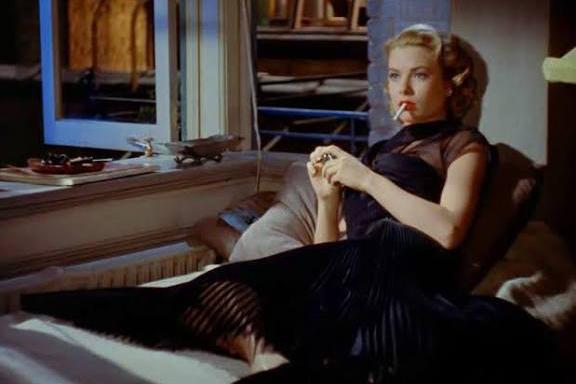
Grace Kelly embodied the fantasy of glamour elevated to fairy-tale proportions, transitioning from a celebrated, Oscar-winning actress to becoming Her Serene Highness, Princess Grace of Monaco. Known for her cool, elegant beauty and refined poise, Kelly became director Alfred Hitchcock’s favorite “ice blonde,” starring in classics like “Rear Window” (1954) and “Dial M for Murder” (1954), where she perfected the image of the emotionally reserved, yet intensely desirable leading lady. Her career culminated with an Academy Award for “The Country Girl” (1954). The ultimate chapter of her life unfolded in 1956 when she married Prince Rainier III of Monaco, a monumental event that captivated the world and became a benchmark for high-society romance. Upon becoming a princess, she officially retired from acting, committing herself to her new royal duties and charitable work. Her name remains synonymous with timeless sophistication, aristocratic style, and the ultimate dream of a woman who achieved both Hollywood stardom and true royalty.
8. Jean Harlow: The Original ‘Platinum Blonde’ Siren
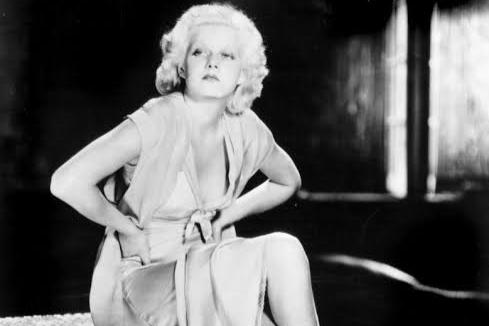
Jean Harlow was the undisputed original “Blond Bombshell,” lighting up 1930s cinema with her playful sensuality, sharp comedic timing, and defiant attitude. Long before Marilyn Monroe, Harlow pioneered the provocative screen siren image, becoming one of Hollywood’s biggest box-office draws. She earned the nickname “The Platinum Blonde” because of her striking, trademark pale hair, a look she popularized and one that became highly influential on beauty standards of the era. Starring in pre-Code classics like “Red Dust” (1932) opposite Clark Gable, Harlow’s characters were often witty, strong, and sexually liberated, roles that resonated with audiences of the time. Her charisma extended beyond the screen, and she became a major style icon, setting trends with her form-fitting gowns. Tragically, her life was cut short by kidney failure at the age of 26, but her legacy as a foundational figure in Hollywood glamour, who established the template for the sultry screen goddess, remains indisputable.
9. Gene Kelly: The Athletic Dance Master
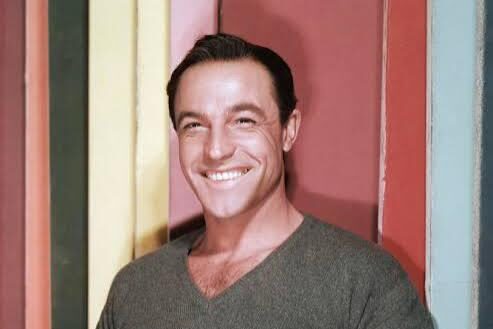
Few stars possessed the sheer, athletic joy and technical brilliance of Gene Kelly. His dynamic, masculine approach to dance fundamentally changed the Hollywood musical, moving the art form away from polite parlor steps to an energetic, relatable style. Kelly was a dancer, choreographer, and director who combined the agility of a gymnast with a relatable, everyman charm. His most legendary performances in films like “An American in Paris” (1951) and the iconic, umbrella-wielding sequence in “Singin’ in the Rain” (1952) are considered masterpieces of cinema. In the latter, Kelly famously performed while battling a high fever, demonstrating his tireless commitment to his craft. He was instrumental in bringing dance to mainstream audiences by incorporating tap, ballet, and modern techniques with a distinctly American, muscular sensibility. Kelly’s work not only entertained millions but also elevated the choreography and staging of the Hollywood musical, proving that dance could be just as expressive and vital as any spoken dialogue.
10. Fred Astaire: The Gold Standard of Grace
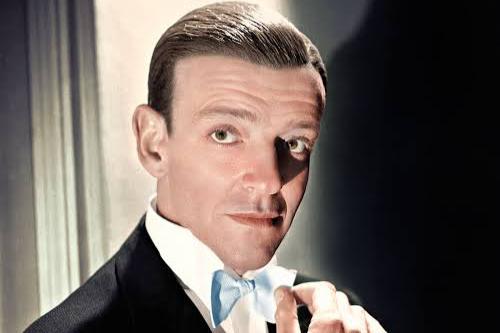
Fred Astaire remains the gold standard of elegance, effortless grace, and rhythmic precision in dance, establishing an enduring legacy that still defines sophistication in movement. Often paired with Ginger Rogers, his distinctive style was characterized by a seemingly effortless smoothness that concealed his rigorous dedication to perfection. In musical classics like “Top Hat” (1935) and “Swing Time” (1936), Astaire famously insisted that the camera capture his entire body during a routine, a groundbreaking move that showcased his mastery and proved he had nothing to hide. His fashion sense, usually a perfectly tailored tuxedo or suit, was as iconic as his footwork, cementing his image as the ultimate gentleman. Astaire’s influence extends far beyond film; he is widely credited by professional dancers and choreographers for elevating musical film dance to an art form, making him an enduring symbol of class, style, and flawless execution.
11. Ginger Rogers: Astaire’s Witty, Versatile Partner
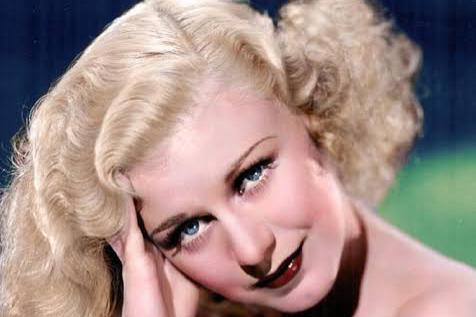
Ginger Rogers was the dazzling complement to Fred Astaire, a witty, versatile star who was far more than just a partner; she was a major box-office draw in her own right. Starring in ten famous musicals alongside Astaire, including “Swing Time” and “Follow the Fleet” (1936), she brought charisma, comedic timing, and a genuine emotional connection to their routines. The famous quote that defines her career is, “She did everything Fred Astaire did, but backwards and in heels.” This phrase perfectly encapsulates the demanding nature of her role, requiring both technical precision and feminine grace. While celebrated for her dancing, Rogers also won an Academy Award for her dramatic performance in the film “Kitty Foyle” (1940), proving her extraordinary versatility beyond the musical genre. Her enduring appeal lies in her combination of strength, glamour, and relatable warmth, cementing her as an independent star whose partnership with Astaire simply became one of the greatest acts in film history.
12. Rita Hayworth: The Love Goddess
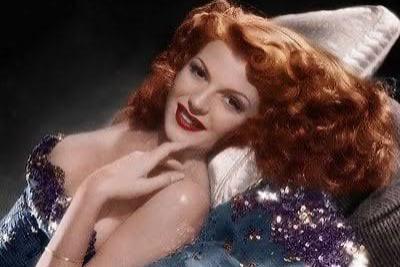
Rita Hayworth was the ultimate “Love Goddess” of the 1940s, a sultry and dazzling figure whose on-screen persona made her one of the most desired women in the world. Born Margarita Cansino, she underwent a sophisticated Hollywood transformation that emphasized her fiery red hair and stunning presence. Hayworth’s defining moment came in the film noir classic “Gilda” (1946), where her provocative performance, especially the legendary glove-stripping dance sequence, cemented her image as a mesmerizing femme fatale. During World War II, her gorgeous pin-up image became one of the most widely circulated for American troops, turning her into a national symbol of beauty and escapism. Her magnetic charm and high-profile marriages, including to actor-director Orson Welles, kept her constantly in the public eye. Hayworth’s image remains an indelible fixture of 1940s glamour, embodying a complex blend of intoxicating allure and tragic vulnerability.
13. Lauren Bacall: The Confident, Smoky Stare
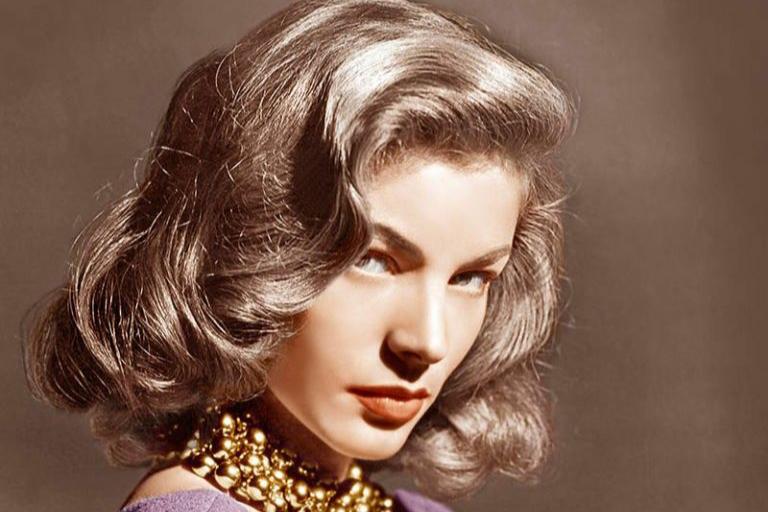
Lauren Bacall burst onto the screen with a revolutionary, cool confidence, instantly becoming the quintessential femme fatale of the 1940s. With her distinctive, smoky voice and her famously direct, confident stare, dubbed “The Look”, Bacall stood out from the sweeter starlets of the era. She made her legendary debut opposite Humphrey Bogart in “To Have and Have Not” (1944), and the on-screen chemistry was so palpable that it quickly became a real-life romance. Their marriage was one of Hollywood’s most iconic, defining a sophisticated, wise-cracking partnership. Subsequent films like “The Big Sleep” (1946) further established her as the epitome of cool, no-nonsense glamour. Bacall’s career successfully spanned multiple decades, and she received an honorary Academy Award in 2009. Her legacy is defined by her commanding presence, her intelligence, and her ability to embody the strong, self-possessed modern woman in cinema.
14. Katharine Hepburn: The Unconventional Oscar Legend
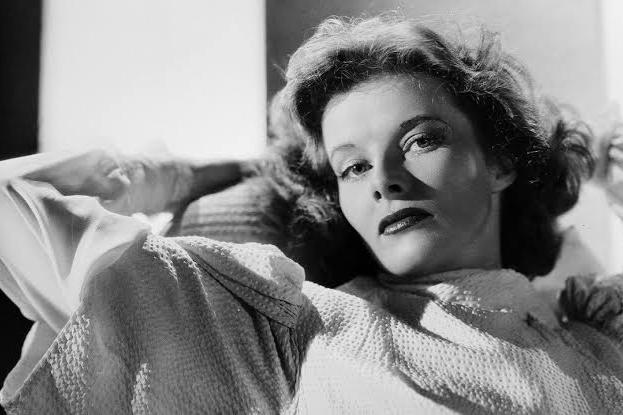
Katharine Hepburn shattered the traditional mold for women in Hollywood, becoming a symbol of enduring strength, independence, and acerbic wit. Known for her preference for trousers over dresses and her fiercely independent spirit, she championed an unconventional image that challenged prevailing social norms of femininity. Over a career spanning six decades, Hepburn showcased an extraordinary range, starring in romantic comedies like “The Philadelphia Story” (1940) and dramas such as “Guess Who’s Coming to Dinner” (1967). Her dominance is etched in Academy Award history: she won four Oscars for Best Actress, a record that no other actor, male or female, has surpassed. Her enduring, often tempestuous, partnership with Spencer Tracy both on and off-screen became a Hollywood legend. Hepburn’s unique blend of intellectual vigor and aristocratic intensity left a profound mark on cinema, proving that an actress could command the screen with wit, grit, and singular charisma.
15. Lana Turner: The Sweater Girl Dream
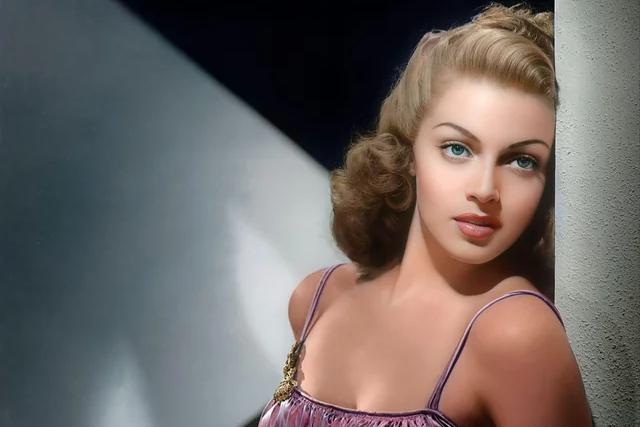
Lana Turner’s rise to fame epitomized the classic, swift, and dazzling dream of the Hollywood studio system. The legend states she was discovered at age 16 sipping a soda at a drugstore counter in Hollywood. With her stunning looks, she was quickly signed to a contract, and her breakthrough role in the crime drama “They Won’t Forget” (1937) earned her the moniker “The Sweater Girl” due to the tight-fitting attire she wore in the film. She quickly became a massive pin-up and style icon of the 1940s, embodying a polished, often melodramatic glamour. Turner starred in dozens of films across several genres, finding success in noirs like “The Postman Always Rings Twice” (1946) and sweeping melodramas such as “Peyton Place” (1957), which earned her an Oscar nomination. Her tumultuous personal life often dominated headlines, but her professional image remains one of the most recognizable and enduring symbols of the studio-era’s high-wattage, unapologetic glamour.
16. Bette Davis: The Command on Screen
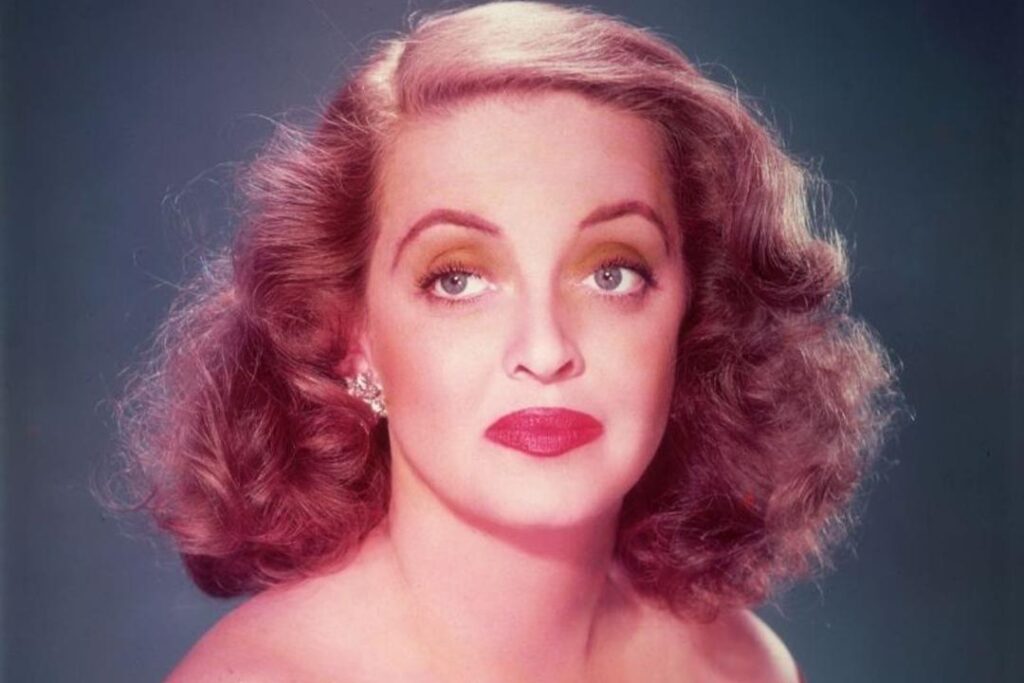
With her famously large, expressive eyes and commanding, often intense presence, Bette Davis established herself as one of Hollywood’s most acclaimed and powerful actresses. Unlike many of her contemporaries who focused on pure glamour, Davis was celebrated for her sheer talent and her willingness to play complex, often unsympathetic characters. Her career was a masterclass in screen domination, highlighted by two Academy Awards for Best Actress. Landmark performances in films like the highly quoted drama “All About Eve” (1950) and the gothic psychological thriller “Whatever Happened to Baby Jane?” (1962), opposite her real-life rival Joan Crawford, showcase her incredible range. Davis was one of the first actors to successfully break free from a studio contract and advocate for creative control, showing a fierce independence that matched her on-screen persona. She proved that an actress could dominate the screen with intelligence, complexity, and a captivating intensity that remains an artistic benchmark today.
Their legends continue to define glamour for every generation that hears the beat and takes to the floor.
This story 16 Glamorous Icons Immortalized in Madonna’s Vogue was first published on Daily FETCH


